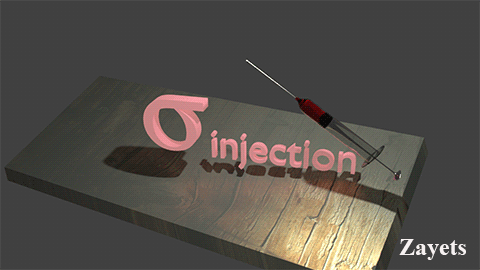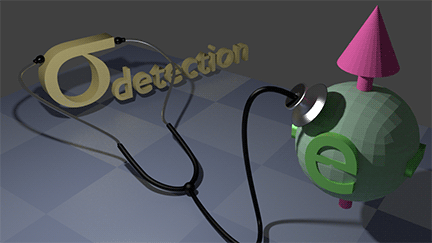Dr. Vadym Zayets
v.zayets(at)gmail.com
My Research and Inventions
click here to see all content |

Dr. Vadym Zayetsv.zayets(at)gmail.com |
|
 |
more Chapters on this topic:IntroductionTransport Eqs.Spin Proximity/ Spin InjectionSpin DetectionBoltzmann Eqs.Band currentScattering currentMean-free pathCurrent near InterfaceOrdinary Hall effectAnomalous Hall effect, AMR effectSpin-Orbit interactionSpin Hall effectNon-local Spin DetectionLandau -Lifshitz equationExchange interactionsp-d exchange interactionCoercive fieldPerpendicular magnetic anisotropy (PMA)Voltage- controlled magnetism (VCMA effect)All-metal transistorSpin-orbit torque (SO torque)What is a hole?spin polarizationCharge accumulationMgO-based MTJMagneto-opticsSpin vs Orbital momentWhat is the Spin?model comparisonQuestions & AnswersEB nanotechnologyReticle 11
more Chapters on this topic:IntroductionTransport Eqs.Spin Proximity/ Spin InjectionSpin DetectionBoltzmann Eqs.Band currentScattering currentMean-free pathCurrent near InterfaceOrdinary Hall effectAnomalous Hall effect, AMR effectSpin-Orbit interactionSpin Hall effectNon-local Spin DetectionLandau -Lifshitz equationExchange interactionsp-d exchange interactionCoercive fieldPerpendicular magnetic anisotropy (PMA)Voltage- controlled magnetism (VCMA effect)All-metal transistorSpin-orbit torque (SO torque)What is a hole?spin polarizationCharge accumulationMgO-based MTJMagneto-opticsSpin vs Orbital momentWhat is the Spin?model comparisonQuestions & AnswersEB nanotechnologyReticle 11
more Chapters on this topic:IntroductionTransport Eqs.Spin Proximity/ Spin InjectionSpin DetectionBoltzmann Eqs.Band currentScattering currentMean-free pathCurrent near InterfaceOrdinary Hall effectAnomalous Hall effect, AMR effectSpin-Orbit interactionSpin Hall effectNon-local Spin DetectionLandau -Lifshitz equationExchange interactionsp-d exchange interactionCoercive fieldPerpendicular magnetic anisotropy (PMA)Voltage- controlled magnetism (VCMA effect)All-metal transistorSpin-orbit torque (SO torque)What is a hole?spin polarizationCharge accumulationMgO-based MTJMagneto-opticsSpin vs Orbital momentWhat is the Spin?model comparisonQuestions & AnswersEB nanotechnologyReticle 11
|
Transport Equations
Spin and Charge TransportThe spin and charge distributions in samples of different geometries can be calculated from the spin and charge transport equations. It is a set of two differential equations with two variables the chemical potential
|
 |
 |
Derivation of the transport Equations
The conservation of charge and spin are fundamental conservation laws of physics. Any possible description of the spin transport should satisfy these conservation laws.
We begin with finding the number of electrons in the group of spin-polarized and spin-unpolarized electrons and clarifying how these numbers are influenced by spin relaxation and spin pumping
Number of electrons in groups of spin-polarized and spin-unpolarized electrons
The number of the spin states can be calculated from spin statistics as
![]()
where ![]() is the total number of the half-filled states in both assemblies, sp is the spin polarization of the metal..
is the total number of the half-filled states in both assemblies, sp is the spin polarization of the metal..
![]() may depend on both the spin and charge accumulations.
may depend on both the spin and charge accumulations.
![]() only slightly depends on the spin polarization sp. For example, in the case of metals with a constant density of the states at the Fermi energy (See here) :
only slightly depends on the spin polarization sp. For example, in the case of metals with a constant density of the states at the Fermi energy (See here) :
![]()
where D is the density of the states near the Fermi energy.
Spin Relaxation & Spin Pumping.
Due to spin relaxation the electrons are converted from the TIA assembly to the TIS assembly. Due to the spin pumping the conversion is in the opposite direction (for example, see here). The number of the spin states in each assembly changes as

where![]() is the spin relaxation time and
is the spin relaxation time and![]() is the spin pumping effective time.
is the spin pumping effective time.
Substituting Eqs. (3.1) into Eq. (3.3) gives

In an equilibrium the number of the spin states in assemblies does not change. Therefore, the spin polarization sp0 of equilibrium can be calculated from condition

From Eq. (3.5) the spin pumping effective time ![]() can be found as
can be found as

Substituting Eq(3.6) into Eq. (3.4) , the rate of electron conversion between assemblies due to the spin relaxation & pumping is given as

In metals and semiconductors the spin and charge currents flow along the gradients of the chemical potential ![]() and the spin polarization sp.
and the spin polarization sp.
The current of electrons of the TIA and TIS assemblies can be expressed as

where conductivities ![]() can be calculated by solving the Boltzmann transport equations.
can be calculated by solving the Boltzmann transport equations.
The electrons of the TIA assembly are spin-polarized. When they defuse they transport spin and charge. In contrast, the electrons of the TIS assembly are not spin-polarized and they only transport the charge. Therefore, the spin and charge currents can be calculated as

where the charge, spin-diffusion, detection and injection conductivities are defined as

Note: the multiplier sp is introduced in the front of ![]() and
and ![]() based on the requirement of the same time-inverse symmetry of both sides of Eqs. (3.10).
based on the requirement of the same time-inverse symmetry of both sides of Eqs. (3.10).
The transport equations can be derived from the continuity equations for the spin and for the charge. The continuity equations describe the conservation laws for the spin and the charge, which require that the amount of the spin and the charge at each special point may change only when electrons are converted between assemblies or when electrons defuse to the point from a surrounding.
The continuity equations for the charge reads:

where n is the number of electrons. In a static case  .
.
Since only electrons of the TIA assembly are spin-polarized, the continuity equations for the spin reads:

Substituting Eq. (3.7) into Eq.(3.11b), we obtain

Substituting Eqs.(3.9) into Eqs (3.12) gives

The Spin/Charge Transport Equations  are obtained as
are obtained as


In a simplest case of a spin diffusion in a bulk of non-magnetic metal, in which
![]()
the Spin/Charge Transport equations are simplify to

In the case when ![]() does not depend on sp, Eq. (4.1) can be simplified to the Helmholtz equation
does not depend on sp, Eq. (4.1) can be simplified to the Helmholtz equation

where spin diffusion length is calculated from Eq. (4.1) as

![]()
In the case of a metal (See here)
![]()
where D_F is the density of states at the Fermi energy
Substituting Eq. (4.4) into Eq. (4.3) gives

In the case of an isotropic metal with a low density of defects, the conductivities can be calculated as (See here)

where tau_k is the momentum relaxation time, v_F is the electron speed at the Fermi sphere. The value of A(sp) is between 1.1 and 1.5
Substituting Eq. (4.6) into Eq. (4.5) gives

or

In case of a non-magnetic metal the mean-free path can be calculated as (see here)

![]() To note: The mean-free path depends on the electron energy (See here). The mean-free path of Eq. (15.5) is the effective mean free path in metal.
To note: The mean-free path depends on the electron energy (See here). The mean-free path of Eq. (15.5) is the effective mean free path in metal.
Spin diffusion length in a ferromagnetic metal |
 |
| Spin Diffusion length as function of the equilibrium spin polarization sp0 of the ferromagnetic metal |
Spin diffusion length shortens as the equilibrium spin polarization sp0 of the ferromagnetic metal increases !!!
The spin diffusion length in a ferromagnetic metal is calculated as
![]()
where sp0 is the equilibrium spin polarization of the ferromagnetic metal and

This is the calculations of the spin diffusion length in the bulk of a ferromagnetic metal
We assume that the injection conductivity is zero ![]() =0. The spin-diffusion conductivity
=0. The spin-diffusion conductivity ![]() is constant.
is constant.
In this case the spin charge/transport equations is given as

the second equation is simplified to

The solution of Eq.(11.4), we search as

where sp1 is the spin polarization at x=0.
Substituting Eq.(11.5) into Eq.(11.4) gives

Solution of Eq.(11.6) is
![]()
Sometime this form is more convenient

where the spin diffusion length is calculated as

It should be noted that Eq. (11.2) is obtained ignoring the dependence of the number of the spin states n_spin on the spin polarization of the electron gas (See here). However, the variation of n_spin is only 10 % (See here) and Eq. (20.1) can be considered as a good approximation
 (Model 1) Oldest and simplest spin transport equation is described by the Helmholtz equitation (T. Valet and A. Fert, Phys. Rev.B. 48, 7099 (1993) )
(Model 1) Oldest and simplest spin transport equation is described by the Helmholtz equitation (T. Valet and A. Fert, Phys. Rev.B. 48, 7099 (1993) )
This transport equation simplifies the spin transport only to a simple diffusion of particles.
Transport equation for model 1 is:

where ![]() are chemical potentials for spin-up and spin-down electrons and
are chemical potentials for spin-up and spin-down electrons and ![]() is the spin diffusion length
is the spin diffusion length
Incorrect assumptions of this model:
1. Ignoring the important fact, that spin diffusion may accompanied by charge diffusion.
2. Ignoring the energy distribution of spin-polarized electrons. The model assumes that all spin polarized electrons have the same spin transport properties..
3. Incorrectly assuming that spin-up and spin-down electrons may have different Fermi energy and different chemical potentials. It is incorrect assumption because frequent spin-independent scatterings mix up electrons of all spin directions and ensure that electrons of spin-directions have the same Fermi energy and the same chemical potential..
4. Incorrectly assuming that transport of spin-up and spin-down is independent. This is only possible only when the time-inverse symmetry is broken even for group of the spin-unpolarized electrons (See below). This is the incorrect assumption of this model.
This transport equation simplifies the spin transport only to a simple diffusion of particles. Such description ignores several important facts. It is assumed that the spin current diffuses without any accompanied diffusion of the charge. This assumption means that in the case of the spin diffusion it is always an equal amount of spin-polarized and spin-unpolarized electrons move in opposite directions. As it is shown above, this assumption may be only valid in case of transport in bulk of a metal. However, in general case this assumption is not correct and the spin diffusion may be accompanied by charge diffusion. For example, such charge accumulation along the spin diffusion is the origin of the effect of the spin detection. Another over-simplified assumption of this model is the assumption that all conduction electrons have the same spin-transport properties. It is not correct. The spin-transport properties of electrons of energy higher and lower than the Fermi energy are substantially different. For example, in a semiconductor for the same polarity of the applied electrical field the direction the spin drift current is opposite for the holes (electron energy is lower than the Fermi energy) and the electrons (electron energy is higher than the Fermi energy). As it is shown above, in a metal there is a similar dependence of the spin transport properties on electron energy.
In case if the conductivities of spin-up and spin-down electrons would be different, the spin-up and spin-down electrons would have different transport properties and therefore they could be distinguished by their spin-down/spin-up projection along one fixed axis. Spin-unpolarized current is the sum of the spin-up and spin-down currents. That means the time-inverse symmetry is broken even for group of the spin-unpolarized electrons. This is the incorrect assumption of those models. The total spin of the group of spin-polarized electrons is zero. Therefore, the time inverse-symmetry of this group should not be broken, there should be no any distinguished direction for this group and all directions should be absolutely equal. For example, in a ferromagnetic metal the time-inverse symmetry of the group of spin-unpolarized electrons (total spin is zero) is not broken along metal magnetization direction. It is broken only for the group of the spin-polarized electrons (total spin is not zero).
Merit of the model 1
For the first time it describes a possibility of spin diffusion without the transport of the charge.
 (Model 2)The model assuming different conductivities of spin-up and spin-down electrons (V.Zayets, Phys. Rev.B. 86, 174415 (2012)) See here.
(Model 2)The model assuming different conductivities of spin-up and spin-down electrons (V.Zayets, Phys. Rev.B. 86, 174415 (2012)) See here.
This model describes the charge accumulation along spin diffusion, the spin detection effect. However, 3 remaining problems of model 3 are not resolved for this model.![]()
Transport equations for model 2 are:

where  is the difference chemical potentials for spin-up and spin-down electrons;
is the difference chemical potentials for spin-up and spin-down electrons;  is the conventional chemical potential; and
is the conventional chemical potential; and  is the relative difference in conductivities for spin-up and spin-down electrons.
is the relative difference in conductivities for spin-up and spin-down electrons.
 (Correct Model)
(Correct Model)
Above-described model correctly describes both the charge and spin transport, it does not violate the low of the time-inverse symmetry and it correctly describes the fact that spin-polarized and spin-unpolarized electrons have different energy distributions.
Transport equations of the model, which is described above, are:

I will try to answer your questions as soon as possible